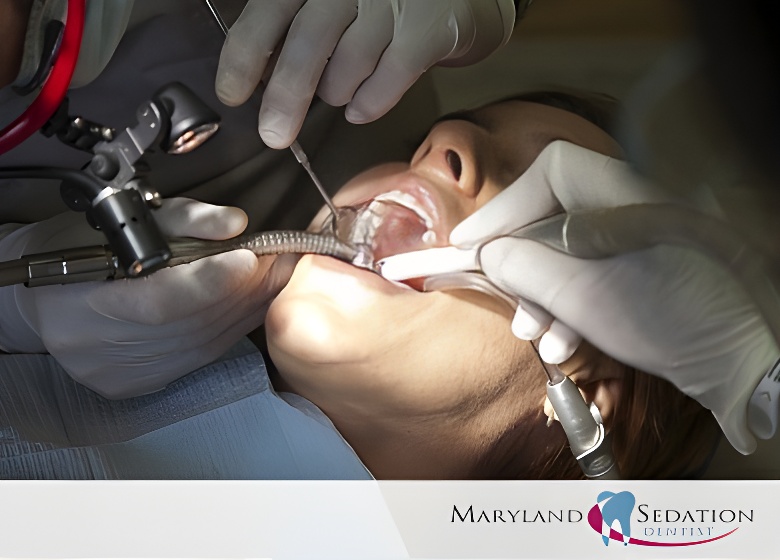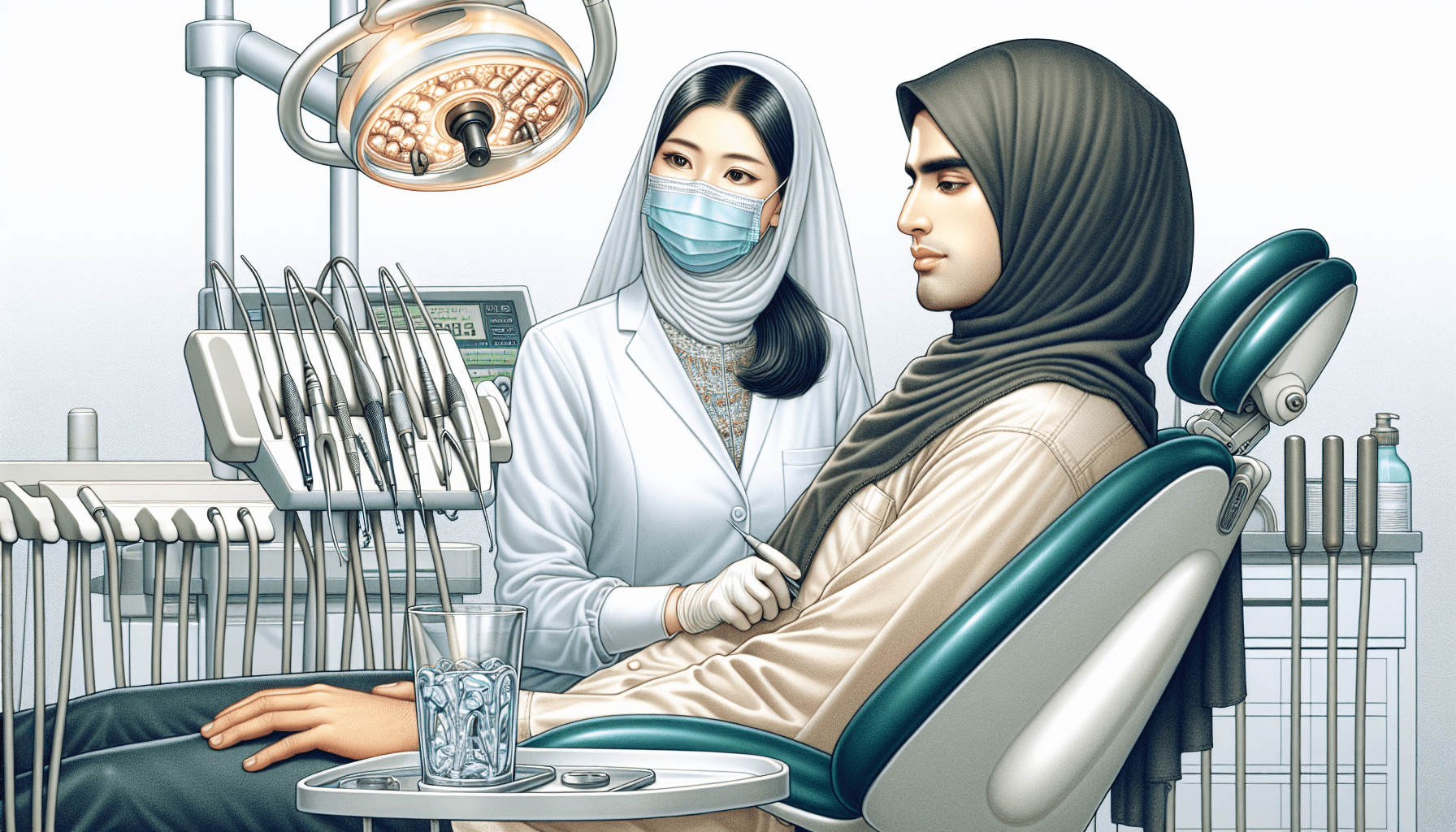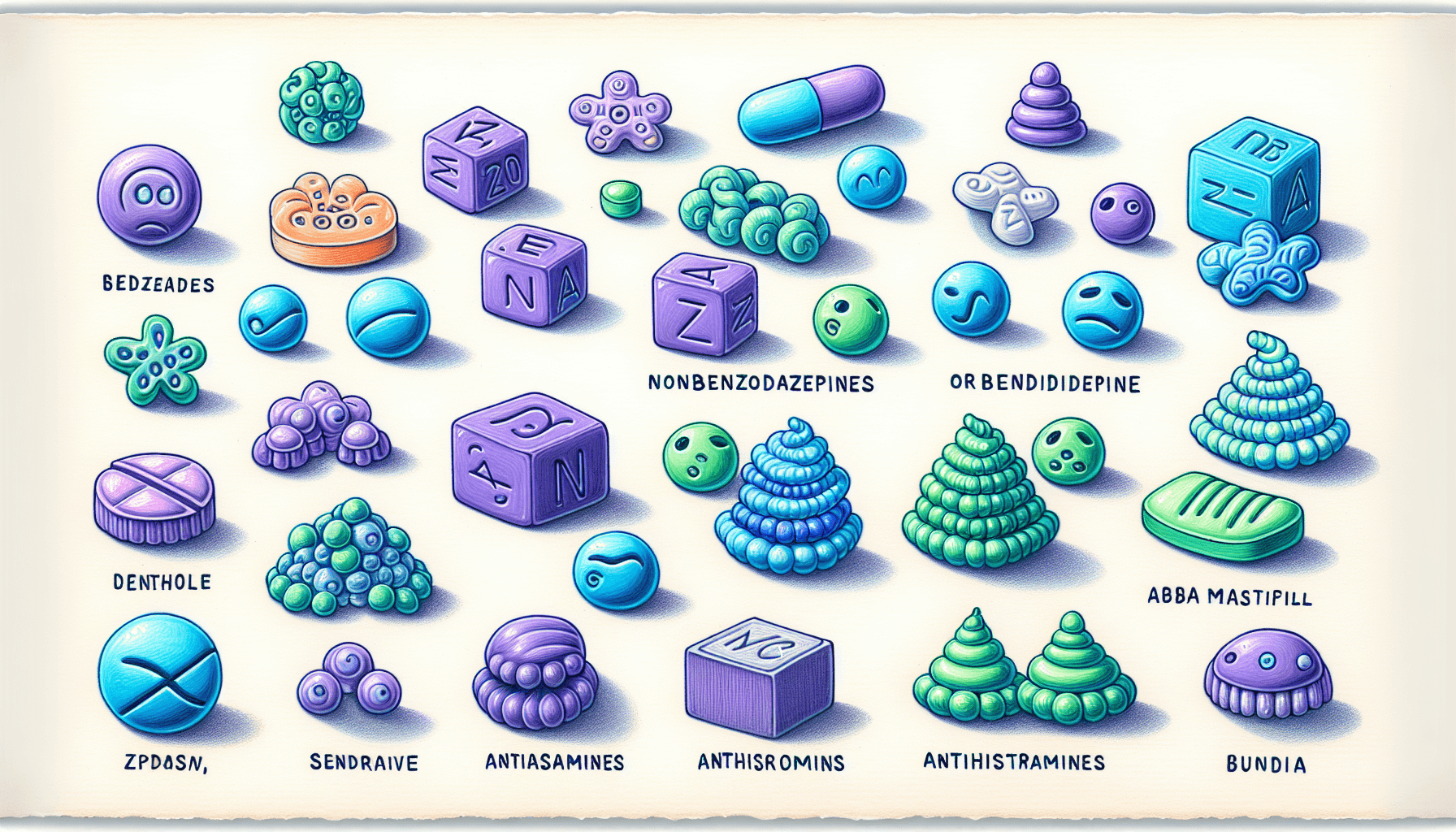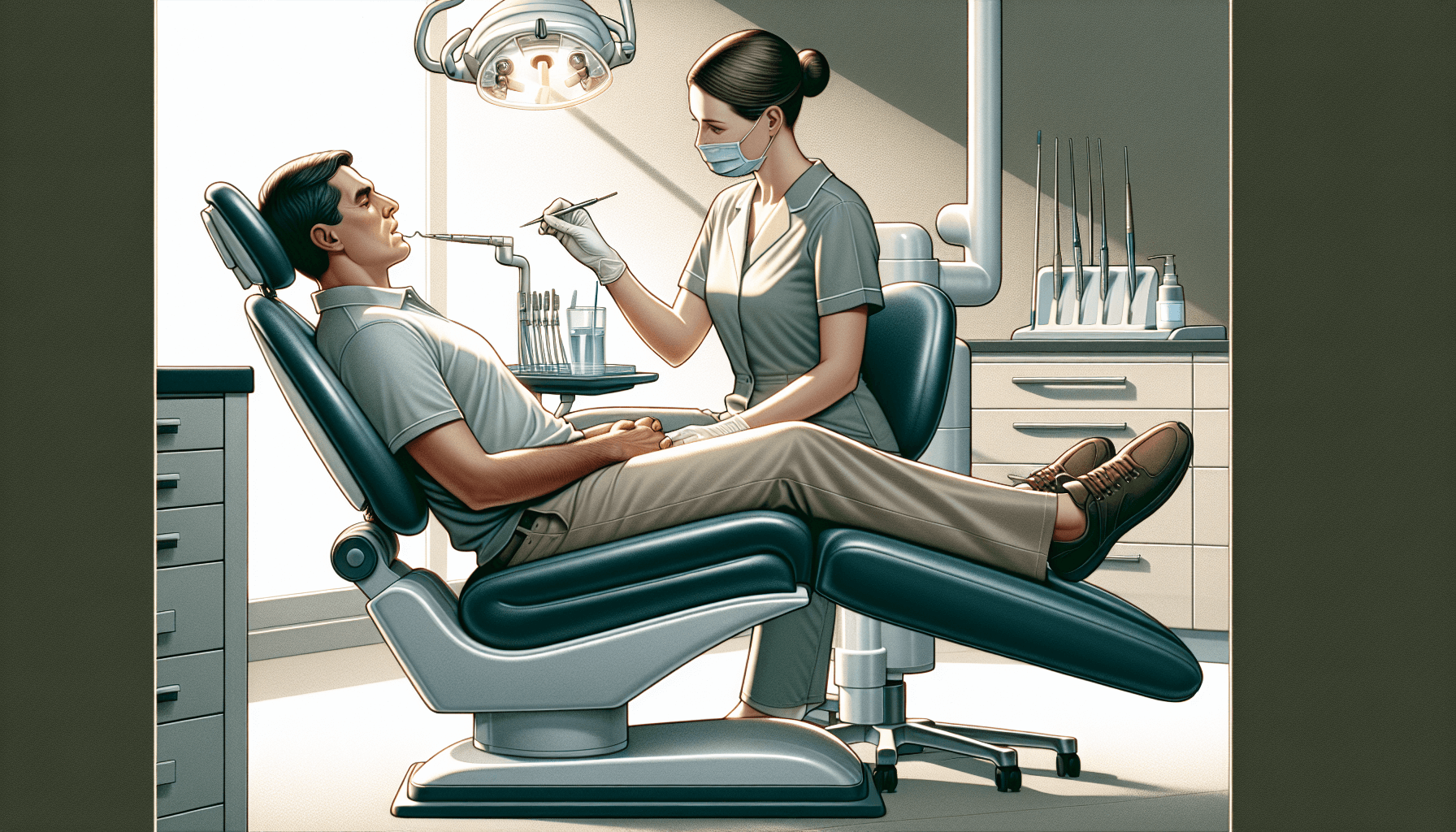Oral sedation dentistry is a great option for patients with mild to moderate levels of dental anxiety. It does not involve IVs and sets in slowly and profoundly. Oral sedation is performed by swallowing a pill or placing a medication under the tongue. The most common sedative pills in the dental office are Halcion (aka Triazolam) and Valium. Sometimes oral sedatives are used in combination with nitrous oxide dental gas for an additive effect. oral sedative drugs is not enough for extreme fear of the dentist. Extreme dental phobia is better managed with IV sedation dentistry.
Patients will not be asleep during oral sedation, but rather will be in a relaxed but awake state. People will typically report a very pleasant experience that they were not bothered by the stress of the procedure. Many patients do not remember their appointment or report that it went by so quickly and that it was “the best dental visit they ever had.” Oral sedation is great for managing moderate:
- Dental phobia
- Gag reflex
- Difficulty getting numb
- Teeth sensitivity

Key Takeaways
- Oral sedation dentistry allows patients to remain conscious but in a state of ‘twilight sleep,’ reducing anxiety and discomfort during dental procedures while often leaving little memory of the experience.
- The oral sedation process includes a pre-procedure consultation to tailor medication to individual health needs, prescribed fasting and hydration, and the provision of local anesthesia during the procedure to manage pain.
- Oral sedation is suitable for a wide range of patients, including children and the elderly, and can be customized according to medical conditions, making dental visits safer and less stressful for those with specific health concerns.
- It is important to choose the right sedative agent based on patient factors and the duration of the dental treatment to ensure the best outcomes and manage anxiety effectively.
Meet Gary Adams DDS
Dr. Adams really enjoys offering oral sedation among other options to relax his patients. Sometimes we use oral sedatives in combination with an IV sedatives. We and Dr. Adams have great empathy for those who fear the dentist and avoid dental care our of anxiety.
Contact us to schedule an oral sedation consult

Understanding Oral Sedation in Dentistry
Oral sedation in dentistry, often referred to as ‘twilight sleep’, is a game-changer for those who dread the dentist’s chair. This moderate level of sedation allows you to remain awake yet blissfully detached from the typical stresses of a dental procedure. Imagine gliding through your appointment enveloped in a serene cocoon of tranquility, free from worry and discomfort. It’s not just a fantasy; oral sedation makes this possible. Oral sedation can help patients feel more relaxed and comfortable before, during, and after their dental appointments, enabling them to receive the necessary dental care.
This type of conscious sedation, also known as minimal sedation, keeps you alert enough to respond to your dentist’s requests but relaxed enough that you’ll likely remember little of the procedure afterwards. It’s a compassionate answer to the needs of those with dental phobia, sensitive teeth, or a gag reflex that makes dental work a challenge. Safety is paramount, and oral sedation’s track record is robust, with tailored medication and dosages ensuring a smooth experience tailored to the nature of your dental care.
Beyond immediate comfort, oral sedation can reshape your entire relationship with dentistry. For many, it’s a bridge over troubled waters, transforming harrowing memories of past dental visits into manageable, even pleasant, healthcare routines. As we peel back the layers of oral sedation together, you’ll see how it’s not just about enduring dental procedures—it’s about enhancing your quality of life.

The Process of Administering Oral Sedatives
When you choose oral sedation, you embark on a carefully choreographed journey, beginning well before you recline in the dental chair and extending beyond the last polish of your pearly whites. It is crucial to choose the right sedative agent based on patient factors and the duration of the dental treatment. Let’s walk through the steps that ensure your safety and comfort throughout this transformative experience.

Preparing for Your Oral Sedation Appointment
The path to a stress-free dental appointment begins with preparation. Before going to the dentist for your sedation appointment, you’ll have a heartfelt conversation with your dentist to cover the spectrum of your health concerns—whether it’s managing diabetes, addressing allergies, or ensuring medications don’t clash. This dialogue is foundational; it’s where a customized sedation plan takes root, tailored just for you. Oral sedation can help patients feel more relaxed and comfortable before, during, and after their dental appointments.
On the eve of your appointment, you’ll fast to sidestep nausea and hydrate to keep your body primed for care. Diabetics will balance their needs to maintain their health during fasting. When the day arrives, dress for comfort in loose clothing, and consider bringing along soothing tunes to ease your mind. Armed with a list of your medications, you’ll arrive early, allowing time to settle in and complete any paperwork.
Remember, a light meal is your ally against an empty stomach and the queasiness it invites.
At the Dental Office
Upon arrival at the dental office, the stage is set for the main event. Oral sedation is a delicate dance between patient and practitioner, necessitating a controlled environment for medication delivery. As the sedative takes hold, you might feel as if you’re drifting into a dream, yet you’ll remain accessible, capable of interaction and awakening with a simple nudge. This balance of grogginess with awareness is the hallmark of oral sedation, ensuring you’re cocooned in relaxation while retaining a tether to the here and now.
While oral sedation quells anxiety, it’s not a painkiller. Your dentist will employ local anesthesia to numb the treatment area, ensuring you’re comfortable as they work. It is crucial to choose the right sedative agent based on patient factors and the duration of the dental treatment. Throughout, your vital signs are closely watched as your dentist stands sentinel over your well-being, ready to adjust sedation as the procedure progresses. All the while, you’ll be blissfully distanced from the procedure, likely with scant memory of it afterward.
Post-Procedure Care
After your dental work is complete, the careful attention to your comfort doesn’t wane. You won’t be steering your own ship home; instead, you’ll be chauffeured by a trusted companion, as the sedative’s lingering effects on memory and motor skills make driving a no-go. Leisure is the name of the game post-procedure; think movies or music, as work and complex tasks are off the table while your mind clears.
You’ll emerge from the haze of sedation with little recollection of the procedure, a testament to the technique’s efficacy. For a day, you’re free from weighty decisions and machinery; even a celebratory drink must wait as your body resets. Ensuring you’re not alone for the ride home is a must, as is a short observation period before you’re released to recuperate in the comfort of your abode. Remember, drowsiness is a stubborn guest and may linger, so give yourself grace and time for the sedation to fully abate. Oral sedation can help patients feel more relaxed and comfortable before, during, and after their dental appointments.
Oral Sedation Recovery
Once all your dental work is complete, we will wake you up and place you into recovery. The sedative drugs we use wear off very quickly, Recovery usually lasts approximately 30 minutes. Your driver and caregiver will drive you home and look out for you. You are not allowed to drive for 24 hours. You are also not permitted to make any legal decisions for 24 hours.
We will have you pick up any prescription medications before your oral sedation appointment. Most patients heal very well after sedation and dental anesthesia.
Types of Oral Sedatives Used in Dentistry
The world of oral sedatives is rich and varied, with each option tailored to the individual’s needs like a finely fitted garment. Whether it’s benzodiazepines like midazolam and triazolam, championed for their anxiety-relieving prowess, or the swift action of triazolam, reaching peak levels within a neat 75 minutes, the choices are plentiful. Diazepam boasts an impressive oral bioavailability, unfurling its calming effect in under an hour. It is crucial to choose the right sedative agent based on patient factors and the duration of the dental treatment.
Some options for anxiety relief include:
- Nonbenzodiazepine GABA agonists like Ramelteon and eszopiclone, which offer a targeted attack on anxiety with rapid onset times
- Antihistamines like hydroxyzine, which provide a gentle sedative embrace and ease you into comfort in a matter of minutes
- Alternative options like zopiclone, with its quick onset and short stay in the body, ensuring a swift return to your daily routine.
The beauty of oral sedation lies in its flexibility; dosages can be dialed up or down, providing a range from mild to moderate sedation, all while maintaining the ease of pill form administration. The selection process is deeply personal, considering factors like age, weight, and medical history to ensure your safety and comfort. With the advent of nonbenzodiazepine GABA agonists, patients have access to a broader spectrum of options, each with a clinical effect mirroring that of traditional benzodiazepines but with a unique chemical profile.

Advantages of Oral Sedation Over Other Sedation Methods
When stacked against its peers, oral sedation stands out for its simplicity and user-friendliness. There’s no need for the delicate art of IV line insertion, nor the stringent vigilance that comes with administering nitrous oxide or general anesthesia. It’s this ease of use that can streamline dental visits, enabling dentists to tackle multiple treatments in a single session and sparing you repeated trips to the dental office. Oral sedation can help patients feel more relaxed and comfortable before, during, and after their dental appointments, making it an ideal choice for those with dental anxiety or a phobia of needles.
The monitoring process for oral sedation is less daunting than that required for IV sedation, which demands immediate dose adjustments and possible reversals. It’s generally safer than the deeper plunge into unconsciousness that general anesthesia entails, and the after-effects are milder compared to the grogginess or memory loss sometimes associated with iv moderate sedation. Patients often report a comfortable drowsiness rather than full unconsciousness or the hangover-like symptoms that can follow other sedation methods.
Oral Sedation for Special Populations
Oral sedation doesn’t play favorites; it can be customized to suit the unique needs of various individuals, from the bustling energy of children to the seasoned wisdom of the elderly. For those with medical conditions that can complicate dental procedures, oral sedation offers a tailored solution that maintains both efficacy and safety. It is crucial to choose the right sedative agent based on patient factors and the duration of the dental treatment.

Pediatric Patients
For our youngest patients, pediatric sedation in the form of oral sedation is a gentle hand guiding them through unfamiliar dental landscapes. It serves as a shield against anxiety and helps little bodies stay still during treatments that feel like they stretch on forever. Medicine’s kinder side shows in options like midazolam oral syrup, a sweetly masked agent of calm for children facing dental procedures. Oral sedation can help children feel more relaxed and comfortable before, during, and after their dental appointments.
Whether inhaled or sipped, these sedatives used in sedation dentistry cushion the experience, allowing for a tear-free visit to the dentist.
Geriatric Considerations
The golden years bring a slower pace, including the body’s metabolism, which significantly impacts how medications are processed. For the elderly, this means a careful calibration of sedatives, mindful of their longer-lasting effects. It is crucial to choose the right sedative agent based on patient factors and the duration of the dental treatment.
Take diazepam, for instance—its already lengthy half-life stretches further in older adults, making it a less desirable option for those in their later years.
Managing Medical Conditions
The tapestry of oral sedation is woven with the threads of individual medical conditions, each requiring a unique pattern of care. Patients with heart conditions find solace in oral sedation’s ability to reduce stress and oxygen demands during dental visits. Those with epilepsy benefit from the anticonvulsant properties of benzodiazepines and the precautionary measures such as supplemental oxygen to stave off seizures.
In this way, oral sedation is not a one-size-fits-all solution but a bespoke service, crafted to ensure the safest dental procedures possible. It also helps patients feel more relaxed and comfortable before, during, and after their dental appointments, enabling them to receive the necessary dental care.
How Oral Sedation Enhances Dental Procedures
The influence of oral sedation on dental procedures cannot be overstated; it’s a catalyst for transformation. Anxiety, the invisible barrier between patients and oral health, dissolves under the soothing influence of oral sedatives. Dentists find an ally in oral sedation, as it allows them to combine treatments into one visit, optimizing time for both the patient and practice. It is crucial to choose the right sedative agent based on patient factors and the duration of the dental treatment to ensure safety and effectiveness.
During the procedure, the possibility of drifting into a light sleep adds an extra layer of comfort, with the assurance that you can be roused easily if needed. It’s this kind of experience that leads to glowing reviews from patients who feel well cared for during their conscious sedation dentistry treatments. With the use of oral sedatives like benzodiazepines and even herbal-based medicines, dentists can confidently provide safe care for most outpatient dental surgeries.

Selecting the Right Sedation Option for You
Finding the perfect sedation match is akin to selecting the right lens to bring a blurry world into focus. The decision is influenced by a blend of factors, from the depth of your dental fear to the predicted length of your procedure. Oral sedation emerges as a contender with a spectrum of benefits, suitable for those for whom breathing through the nose might be a challenge and without depleting essential nutrients like vitamin B12. Oral sedation can help patients feel more relaxed and comfortable before, during, and after their dental appointments, enabling them to receive the necessary dental care. Deep sedation, on the other hand, may be considered for more complex cases.
In cases of severe dental anxiety or particularly long procedures, IV sedation may take center stage, offering a deeper level of relaxation. Yet, for many, the allure of oral sedation lies in its simplicity and the gentle approach it represents. It’s a path that leads away from fear and towards a sense of control over your dental health journey. Oral vs IV sedation dentistry
Real Patient Experiences with Oral Sedation
Behind every statistic and clinical fact lie real people with stories of transformation thanks to oral sedation. Patients who once viewed the dental office as a place of dread now speak of their experiences with a sense of wonder and gratitude. The common narrative is one of diminished fears, a comforting sense of security, and a pain-free passage through dental procedures. It is crucial to choose the right sedative agent based on patient factors and the duration of the dental treatment to ensure the best outcomes.
The warmth and reassurance provided by dental professionals do not go unnoticed. Patients frequently express their appreciation for the support and care they receive, underscoring the human touch that makes oral sedation not just a medical procedure but a holistic experience.
Summary
As we close the chapter on oral sedation, it’s clear that this method is more than a simple sedative—it’s a bridge to better dental health and a beacon of hope for those haunted by dental fear. From the meticulous preparation to the array of sedatives tailored for every individual, oral sedation stands as a testament to the progress in dental care. Whether you’re a nervous first-timer, a concerned parent, or someone seeking comfort in your golden years, oral sedation offers a path to dental care in its most compassionate form. It helps patients feel more relaxed and comfortable before, during, and after their dental appointments, enabling them to receive the necessary dental care.
Frequently Asked Questions
Oral sedation is generally safe when administered by experienced dental professionals, but it’s important to discuss your medical history, current medications, and any health conditions with your dentist to ensure the best sedative choice and dosage for your needs.
No, it’s crucial to have someone else drive you home after being orally sedated. The sedation can impair your memory, coordination, and reaction times, making driving unsafe. You must bring a driver who will take care of you after your oral sedation dentist visit.
On the day of your oral sedation visit, Dr. Adams will first verify that you did not eat or drink for the prior 8 hours. Then, Dr. Adams will administer a dose of Triazolam. Once the oral sedatives have been given, it usually takes 45 minutes to full work. Once you are comfortable and sedated, we monitor your vital signs continuously and finish all your dental work.
The effects of oral sedation can last for several hours post-procedure, so it’s important to avoid significant activities for the rest of the day to ensure safety and recovery.
You should not feel any pain during your dental procedure with oral sedation, as your dentist will use local anesthesia in conjunction with the sedation to ensure your comfort.
Dentists determine the correct dosage of an oral sedative by considering factors such as age, weight, medical history, and the level of anxiety or fear, ensuring safety and comfort during the dental procedure.
 2918 Spencerville Rd, #124Burtonsville, MD 20866
2918 Spencerville Rd, #124Burtonsville, MD 20866  (301) 421 1118
(301) 421 1118 